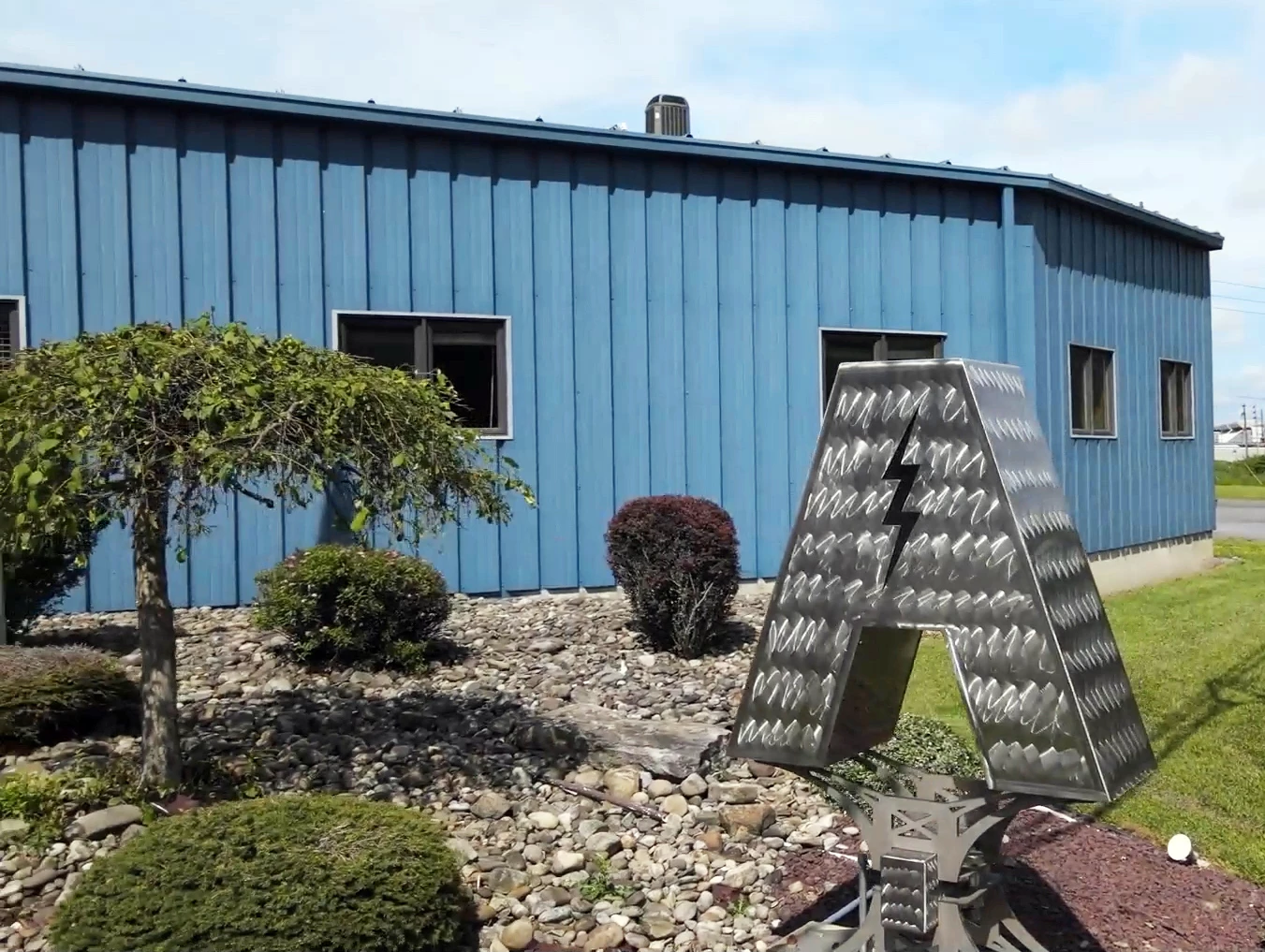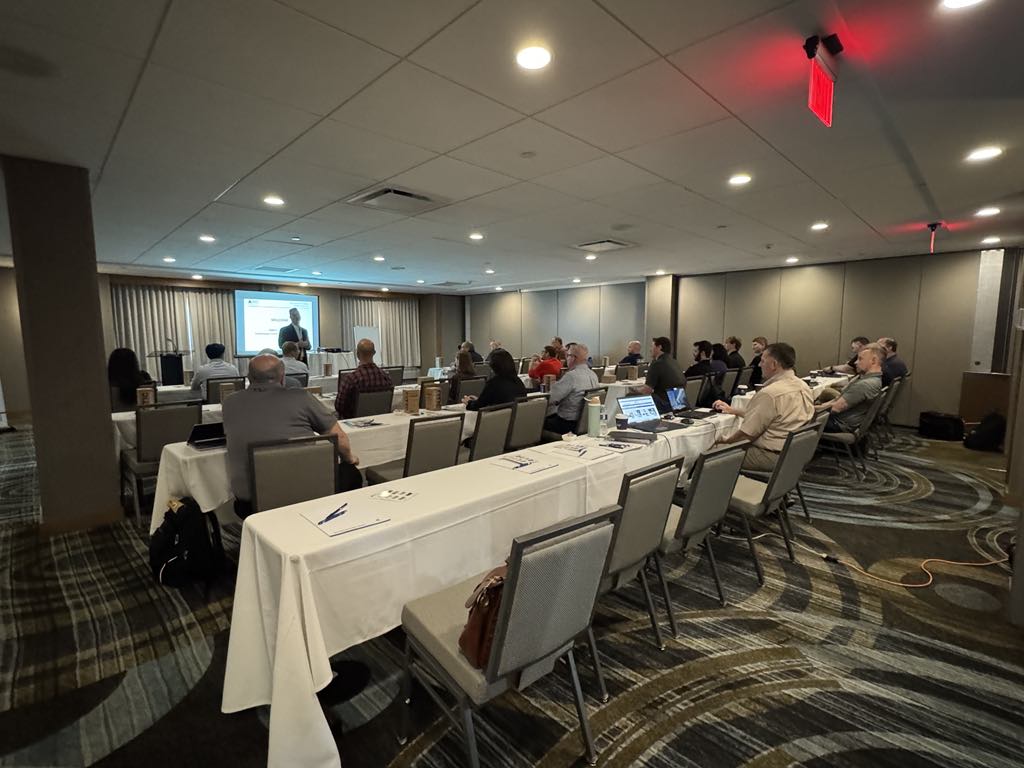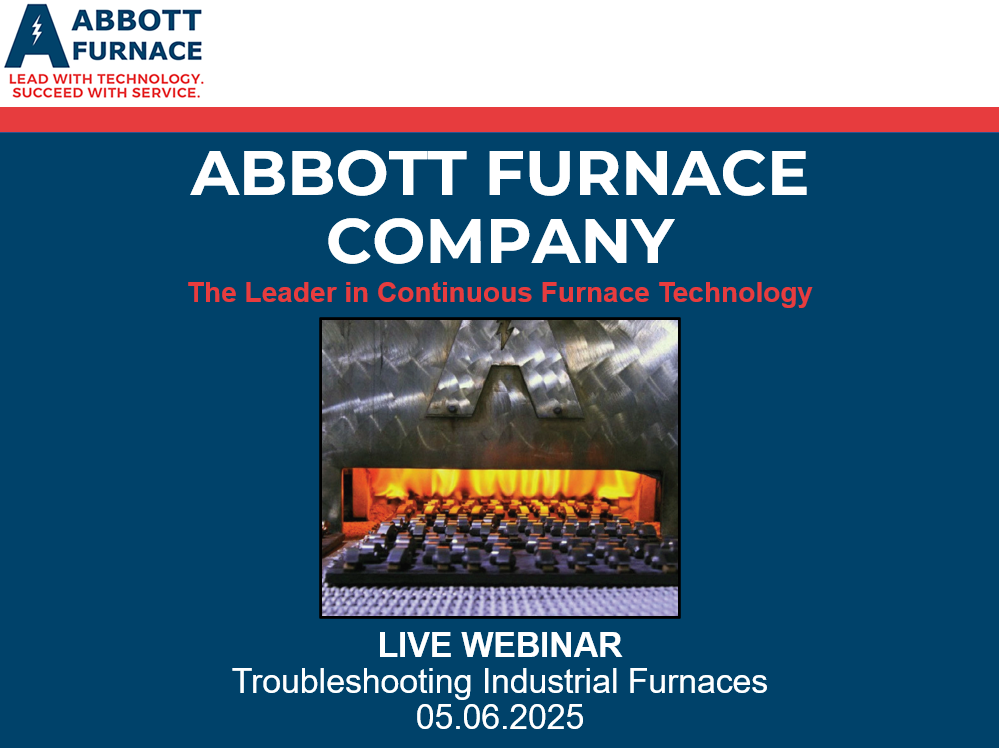
Heat-treatment processes like carbonitriding, annealing and sintering are used to create crucial components for the aerospace, petrochemical and automotive industries, so the industrial furnaces used to perform these tasks must be able to produce precise and repeatable results. This is done by carefully monitoring and controlling furnace atmospheres, temperatures and air flow. This article will explain the importance of each of these factors.
Industrial Furnace Atmosphere Control
The atmosphere in industrial furnaces can either encourage or prevent chemical reactions. When the industrial furnace atmosphere acts as a carrier, it reacts with the surface of the metal being treated to create an environment that supports the processes like hardening.
When the atmosphere plays a protective role, it prevents the material being treated from reacting with harmful elements. If the atmosphere is not closely monitored and controlled, unwanted chemical reactions could leave the parts produced unsuitable for their intended purpose. Furnace atmospheres are made up of either hydrogen, inert gases like argon, nitrogen or helium or endothermic gas mixtures.
Importance of Inert Atmosphere Gases
 Inert atmospheres are protective, and they are used in industrial furnaces when chemical reactions like decarburization or oxidation must be avoided. Inert atmospheres allow furnace environments to be controlled with great precision during processes like sintering and hot isostatic pressing, which leads to extremely clean and consistent parts. Nitrogen, helium and argon are the gases most commonly used to create an inert industrial furnace atmosphere.
Inert atmospheres are protective, and they are used in industrial furnaces when chemical reactions like decarburization or oxidation must be avoided. Inert atmospheres allow furnace environments to be controlled with great precision during processes like sintering and hot isostatic pressing, which leads to extremely clean and consistent parts. Nitrogen, helium and argon are the gases most commonly used to create an inert industrial furnace atmosphere.
How to Measure Furnace Atmosphere
The composition of the atmospheres in industrial furnaces changes constantly when metals are heat treated, which means sophisticated measurement and control devices are needed to keep things consistent and maintain the quality of the finished product. These devices were once monitored and adjusted by furnace operators, but they are now more likely to be linked to a sophisticated electronic control panel like Abbott Furnace’s S.M.A.R.T. System.
Tools for Measuring and Sampling
Industrial furnace atmosphere control functions are carried out by a series of probes and sensors. These components measure and control gas ratios and oxygen, water vapor and carbon dioxide levels during the entire furnace cycle. The devices most commonly used for controlling an industrial furnace atmosphere include:
- Oxygen probes
- Oxygen analyzers
- Combustion analyzers
- Dew-point analyzers
- Non-dispersive infrared analyzers
Endothermic Atmosphere Classifications
Protective endothermic industrial furnace atmospheres are usually made up of a mixture containing nitrogen, hydrogen, carbon monoxide, carbon dioxide and traces of water. They are used when a reducing atmosphere is needed for processes like sintering and bright hardening. The American Gas Association has developed the following three endothermic atmosphere classifications.
- Class 200: This is the most basic atmosphere classification and is made by removing carbon dioxide and water vapor from a nitrogen base.
- Class 300: This endothermic atmosphere is created by adding a mixture of fuel and air to a heated chamber containing a catalyst.
- Class 600: This atmosphere is based on ammonia.
Controlled Air Flow in Furnaces
The internal temperatures of industrial furnaces must be kept as uniform as possible to maintain part quality. Recirculating the air inside a furnace more frequently is one of the techniques used to achieve this goal. When extremely tight uniformity tolerances are required, furnaces may be fitted with higher capacity motors and larger fans. This can increase the cost of a furnace substantially, so it is prudent to determine the allowable temperature variances for the processes that will be performed before investing in equipment.
Controlled vs. Uncontrolled Airflow
Air flow may be uncontrolled in less sophisticated heating equipment like batch ovens that can produce acceptable results, even when temperatures fluctuate by plus or minus 10 degrees Fahrenheit. But control systems are required when temperature tolerances are tighter. When determining whether air flow should be controlled or uncontrolled, engineers consider the materials that will be heat treated and the processes they will be subjected to.
Air Pressure and Movement
When determining the optimal industrial furnace air flow, engineers consider both the way the air will circulate inside the heating chamber and the amount of air pressure needed to achieve the desired results. To run these calculations, engineers need to know the kind of heat-treating process the furnace will be used for, how quickly the furnace will be heated up, and how long the desired temperature will be maintained.
Sizing of Hole and Nozzle that Allows Air Flow
Once the desired air flow pattern has been determined, the devices that will be used to cause impingement will be selected. Impingement heats up the materials being heat treated more quickly by increasing the surface-to-volume ratio, and it is normally accomplished with cones, louvers, or slot nozzles. Nozzles are available in various shapes and materials to suit a wide range of heat-treating processes. They work best when they direct air onto the material being treated at a right angle.
Air Flow Patterns
The air flow in furnaces is designed to ensure that heat-treated parts meet strict quality control standards. The most commonly used air flow patterns in industrial furnaces are top-to-bottom, bottom-to-top, horizontal or a combination of horizontal and top-to-bottom or bottom-to-top. The design of the furnace also influences air flow. Air usually flows horizontally in batch ovens, but conveyor furnaces are designed to move air from either top-to-bottom or bottom-to top.
Air Pressure Changes in Furnaces
The air pressure must be maintained in an industrial furnace to prevent what is known as the chimney effect. This occurs when a difference in density between a furnace atmosphere and the air outside creates buoyancy. Pressure controllers prevent the chimney effect by changing damper settings or adjusting fan speeds. Maintaining positive pressure is especially important with controlled atmospheres, as outside air entering the heating chamber can be dangerous.
Heat Treating Atmosphere, Air Flow, and Temperature Control
Many of the parts created by heat treatment are expected to withstand grueling environments, which is only possible if the furnaces that treat them have a strictly controlled environment. The furnace atmosphere can either encourage or prevent chemical reactions, and the way air is directed can ensure that the temperature inside the heating chamber remains uniform. The third variable that must be carefully monitored and controlled is temperature.
Methods for Controlling Temperature
 The temperature inside a furnace can be controlled in several ways. Industrial furnace temperature control systems that only control the flow of fuel are inexpensive and work well in some situations, but they cost more to run. Proportional systems control both the fuel and air supply, and adding features that allow the air and gas ratio to be adjusted improves fuel efficiency and lowers operating costs. Pulse control systems provide a fixed ratio of fuel and air while maintaining a high flame velocity, which ensures consistent temperatures throughout the process cycle.
The temperature inside a furnace can be controlled in several ways. Industrial furnace temperature control systems that only control the flow of fuel are inexpensive and work well in some situations, but they cost more to run. Proportional systems control both the fuel and air supply, and adding features that allow the air and gas ratio to be adjusted improves fuel efficiency and lowers operating costs. Pulse control systems provide a fixed ratio of fuel and air while maintaining a high flame velocity, which ensures consistent temperatures throughout the process cycle.
For extra in-depth information about atmosphere, airflow and temperature control, watch our on-demand webinar.
Fluctuating Temperature Issues
Keeping heating chamber temperatures within defined limits is crucial during heat treatment. When temperatures rise too high, materials transform too quickly and unwanted outcomes like grain growth can result in metal that is too soft or weak for its intended purpose. When temperatures fall below the desired range, the finished product may be more fragile and prone to cracking.
Common Applications
Metal is usually exposed to extreme temperatures to harden it, soften it or make it more durable. Common heat-treatment processes include:
- Carburizing: This increases hardness by adding carbon, and it is usually done in an endothermic atmosphere.
- Brazing: Metals like silver and copper are brazed at high temperatures in an atmosphere of pure hydrogen or dissociated ammonia.
- Tempering: This process increases grain size to improve the ductility and toughness of metals that have already been heat treated.
- Annealing: Metals are annealed to soften them or change their physical properties.
- Sintering: This process heats metals to the point where they melt, and it requires a protective atmosphere.
- Bright annealing: This process is often performed in an atmosphere of pure hydrogen to minimize oxidation, but nitrogen or argon atmospheres can also be used.
Industrial Furnace Heat Treating
These processes only produce the desired results when suitable furnaces are used to perform them, but picking the right equipment can be challenging. The Abbott Furnace Company has been making, servicing and repairing industrial furnaces for more than 35 years, which means we have the experience and know-how needed to help our clients make wise choices.
Our team of qualified mechanical engineers, electrical engineers, process engineers and industrial engineers only make recommendations after listening to the client and assessing their needs, and our service and parts professionals ensure that all the equipment we build and install provides years of faithful service. If you would like to know more about our industrial furnaces and furnace control systems, you can call us at (814) 781-6355, or you can just fill out our online form.








